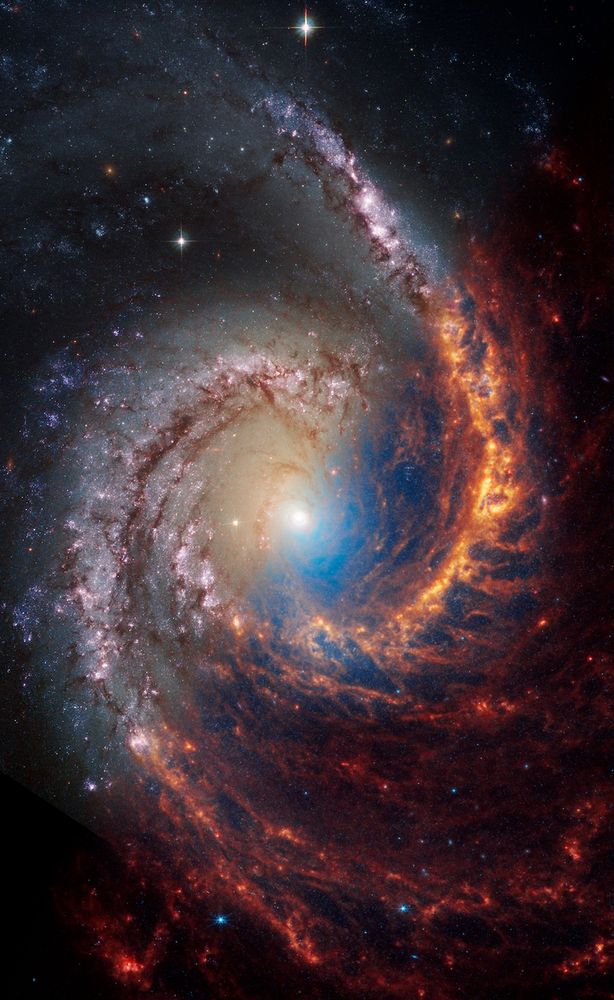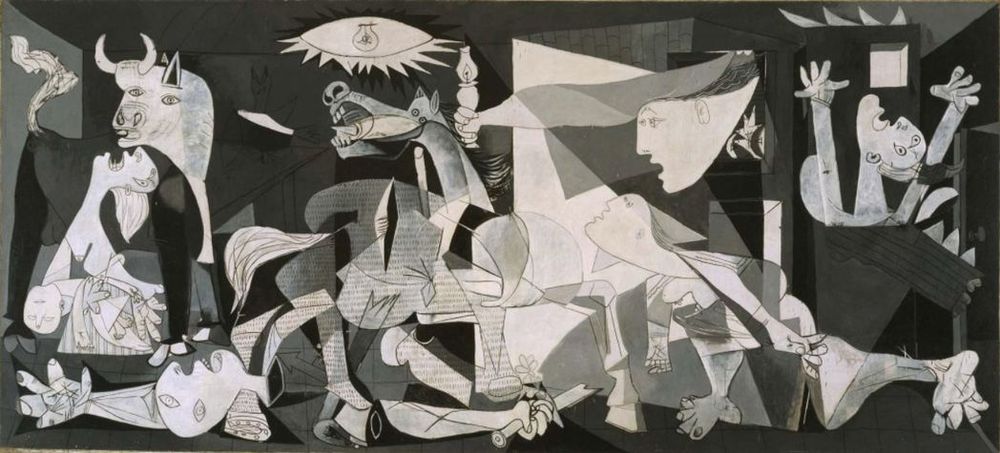Let’s explore two different views of a spiral galaxy. When it comes to NGC 628, #Hubble and #NASAWebb’s images show a contrast between hot stars in visible light, and cool stars and dust in infrared light: https://bit.ly/42XwnGj 🔭 🧪
19.09.2025 15:07 — 👍 90 🔁 24 💬 4 📌 4

Plot showing the star-forming galaxy main sequence with PHANGS-HST star cluster age-mass diagrams drawn at the respective SFMS position of each galaxy.
The location of a galaxy with respect to the star-forming galaxy main sequence is reflected in its cluster age-mass diagram, providing insight as to how galaxies evolve on/off/along the SFMS. 4/4 in 🧵 content.cld.iop.org/journals/006...
19.08.2025 23:42 — 👍 0 🔁 0 💬 0 📌 0

Globular cluster mass functions for PHANG-HST and illustrative color images of example globular clusters.
We compare globular cluster mass functions for our galaxy sample aggregated in various ways to the Milky Way GC mass function. 3/4 in 🧵 content.cld.iop.org/journals/006...
19.08.2025 23:31 — 👍 0 🔁 0 💬 1 📌 0
We present age-mass diagrams showing that both young nebular objects and old globular clusters are properly modeled and represented. Animation link below 2/4 in 🧵 content.cld.iop.org/journals/006...
19.08.2025 23:20 — 👍 0 🔁 0 💬 1 📌 0
The work our talented team does to ensure the public learns about discoveries made with NASA telescopes, and our place in the Universe, risks being lost without at least keeping NASA’s funding flat. The current budget plan removes almost all of it. If this matters to you, make sure your reps know.
02.07.2025 20:28 — 👍 6 🔁 3 💬 0 📌 0

Webb’s image of NGC 1512 shows a face-on barred spiral galaxy anchored by its central region, which is circular and shows a bright white point at the center with blue and yellow circles around it. Outside the core is a large bar structure filled with a haze of blue stars, forming a rough parallelogram shape and taking up about a quarter of the area. The bar is crossed by orange filaments made of stars, gas, and dust that extend diagonally to the top left and bottom right. Outside this, the thick orange spiral arms form a rough oval, and within them there are smaller oval areas that appear black. The spiral arms are largely orange, ranging from dark to bright orange and extend beyond the edges of the image. There are many larger blue stars and slightly larger pink points of light spread throughout. Two larger foreground stars with at least six diffraction spikes are at top center and bottom center.
#NASAWebb was built with the promise of revolutionizing astronomy. With three years now under its belt, has Webb lived up to the hype? We sure think so: bit.ly/3ZVIOR9 🔭 🧪
02.07.2025 15:04 — 👍 94 🔁 17 💬 1 📌 3

A spiral galaxy, showing a thousand different colours that indicate the regions of different stars, gas and dust. The centre of the galaxy has more golden and orange light, while the outer edges fade into a deep blue that further fades into the black of the universe. Speckled across the galaxy are portions of bright pink light, along with patches of brown and black.
Astronomers have created a galactic masterpiece!
Using our VLT, they observed the Sculptor Galaxy in thousands of colours simultaneously 🌈
The more shades of colour there are in an image of a galaxy, the more we can learn about its inner workings.
Read more: www.eso.org/public/news/...
🔭 🧪 ☄️
18.06.2025 12:04 — 👍 787 🔁 156 💬 16 📌 9
Is it a frisbee? No, but catch this Hubble and #NASAWebb comparison of spiral galaxy NGC 2090. Hubble shows the galaxy’s glowing core, threads of dust, and groups of stars. Webb reveals the spiral arms’ structures and dust particles. 🔭 🧪
13.06.2025 16:19 — 👍 129 🔁 22 💬 2 📌 2

Two observations of the galaxy NGC 1566 are split diagonally, with Hubble’s observations at top left and Webb’s at bottom right. The galaxy’s core appears centered and the galaxy’s arms rotate counterclockwise. In Hubble’s image, two prominent spiral arms are a mix of dark brown dust lanes and some bright blue and pink star clusters, and the center is pale yellow. In Webb’s image, the spiral arms are shades of orange, with prominent dark gray or black “bubbles,” and there is a blue haze surrounding the core.
There’s just something about face-on spiral galaxies!
In 2024, 19 stunning #NASAWebb images of spiral galaxies were released. These observations were part of the PHANGS program to study galaxies’ structures. Hubble’s image is at left, and Webb’s at right: bit.ly/4jq4vQn 🔭 🧪
20.05.2025 13:23 — 👍 2429 🔁 391 💬 46 📌 16

If a foreign adversary snuck into our Federal budget and cut science research and education the way we’re cutting it ourselves — strategically undermining America’s long-term health, wealth, and security — we would likely consider it an act of war.
19.05.2025 19:36 — 👍 33732 🔁 8700 💬 1190 📌 544
No other observatory can match Hubble’s unique abilities.
Credit: NASA Goddard Space Flight Center, ESA, and STScI. 🧪 🔭
12.05.2025 13:25 — 👍 91 🔁 15 💬 2 📌 0

A huge subsystem of the Roman observatory in a thermal vacuum chamber. Seven technicians stand of the side of the observatory, as the bottom of the chamber.
A key portion of #NASARoman has cleared a thermal vacuum test. Tt was subjected to the hot and cold temperatures it will experience in space: go.nasa.gov/43cwDQL 🔭 🧪
08.05.2025 15:26 — 👍 79 🔁 17 💬 3 📌 0

At the center is a nebula on the black background of space. The nebula is composed of wispy filaments of light blue clouds. At the center-right of the blue clouds is a large cavernous bubble. The bottom left edge of this cavernous bubble is filled with hues of pink and white gas. There are several other smaller cavernous bubbles at the top of the nebula, including two tiny cavities at the top center of the image. There are hundreds of dim stars that fill the surrounding area of the nebula.
A cavernous area fit for a dragon. 🐉
#NASAWebb revealed more than 200 massive, young stars among the pillars of gas and dust in star-forming region NGC 604. This area is more than 2.7 million light-years from Earth in the Triangulum galaxy: bit.ly/4icfWLh 🔭 🧪
11.04.2025 14:50 — 👍 1171 🔁 147 💬 14 📌 8
The American Astronomical Society is gravely concerned by the deep cuts to NASA science funding reported to be in the draft President’s Budget Request for Fiscal Year 2026. Read more here: aas.org/press/aas-st... and take action now: aas.org/urge-nasa-su...
11.04.2025 20:04 — 👍 264 🔁 141 💬 4 📌 9

New Hello Universe project: Interpreting Convolutional Neural Networks - a tutorial of techniques that can be used to visualize the importance of data features in machine learning models.
New Hello Universe project: Interpreting Convolutional Neural Networks - a tutorial of techniques that can be used to visualize the importance of data features in machine learning models. archive.stsci.edu/hello-univer...
10.06.2024 14:02 — 👍 0 🔁 1 💬 0 📌 0
NancyRomanSci is managed by the Roman Science Centers and provides researchers with the most up-to-date information related to doing science with NASA's Nancy Grace Roman Space Telescope
Astrophysicist studying gas in galaxy mergers
Hi! I'm a friendly bot that manages sign-ups to the Astronomy feeds.
You can sign up to the feeds with "@bot.astronomy.blue signup".
I can also tell some bad jokes 😇
Managed by @emily.space.
Astrophysicist at the Center for Astrophysics | Senior Vice President, American Astronomical Society
Branch Manager at Space Telescope Science Institute working in the MAST archive. Astronomy PhD. Studies stars and exoplanets. Loves programming. Opinions are my own. He/Him/His
I'm an Astronomer, mostly studying dust-producing stars with JWST and HST. Opinions are my own. She/Her
Space age whiz kid
https://www.strw.leidenuniv.nl/~overzier/
Manager for NASA’s Exoplanet Exploration Program, AAS VP, NHFP lead, Mom
Former Deputy Director NASA Exoplanet Science Institute
Mother, astrophysicist, educator, writer, artist, thinker about things. Views expressed are mine. Duh.
Prof. of Astronomy and Physics, Haverford College. PI of Galaxy Zoo. Radio astronomer. Check out my latest book “The Astronomers Library” about books, libraries and astronomy - three of my favourite things. Brit/US.
Astronomer | Data scientist
ngVLA Assistant Scientist at NRAO
The Space Telescope Science Institute is the Science Operations Center for Webb, Hubble, and the upcoming Roman space telescopes, & Mission Operations Center for Webb. We help humanity explore the universe with advanced space telescopes and data archive.
Astronomer @ Princeton University (NASA Hubble Fellow) | 孙嘉懿 | he/him | https://astrojysun.github.io
Austrian Astronomer -- Jansky Fellow at NRAO | exploring the space between stars in nearby galaxies 🔭 | Did my PhD at Uni Bonn & IMPRS | BA BSc MSc at Uni Wien 🇦🇹 | misses Marillenknödel
✨ looking to our future with NASA's Habitable Worlds Observatory (SuperHubble!) & AI
✨ exploring nearby galaxies with PHANGS, Hubble, JWST












